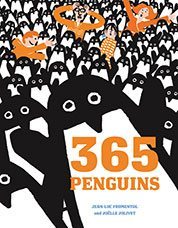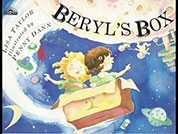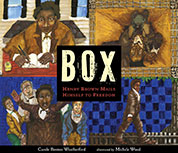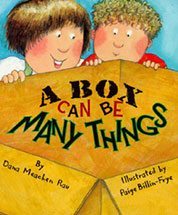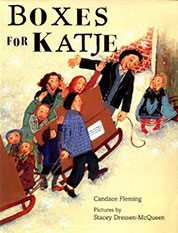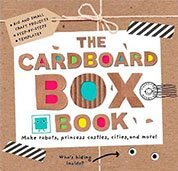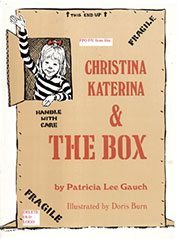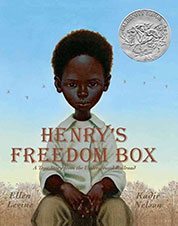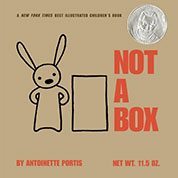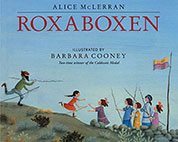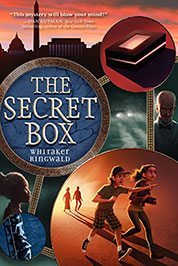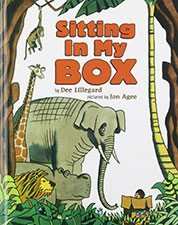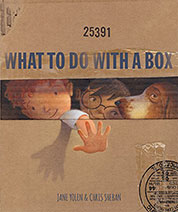Boxes have many stories to share, stories to inspire, and stories to help us learn and be creative. Here are a few of the stories that boxes have to tell. You might well expect to find books about creative play and cardboard boxes, but there are books for a range of young readers here and boxes comes in many shapes and colors.
(If you would like to purchase any of the books below that are in print, clicking on the book cover will take you to Bookshop.org, which shares its book sales with local, independent booksellers. Bookology earns a small commission from the sale of each book, thereby supporting the work we do.)
|
|
Beryl’s Box written by Lisa Taylor When Penelope and Beryl must play together at Penelope’s house, Beryl isn’t interested in Penelope’s plentiful toys. She wants to play in a cardboard box, imagining all sorts of adventures. Penelope is intrigued and soon the girls become friends. Ages 3 to 6. |
|
Box: Henry Brown Mails Himself to Freedom written by Carole Boston Weatherford Henry Brown wrote that long before he came to be known as Box, he “entered the world a slave.” He was put to work as a child and passed down from one generation to the next — as property. When he was an adult, his wife and children were sold away from him out of spite. Henry Brown watched as his family left bound in chains, headed to the deeper South. What more could be taken from him? But then hope — and help — came in the form of the Underground Railroad. Escape! |
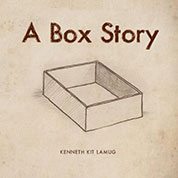 |
Box Story written by Kenneth Kit Lamug The author and illustrator uses pencil drawings to convey all the ways in which a box is not just a box. Ages 3 to 7. |
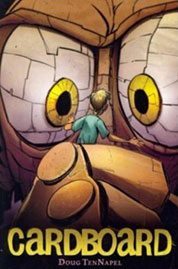 |
Cardboard written and illustrated by Doug TenNapel In this graphic novel, Cam’s dad is feeling depressed and there isn’t a lot of money to buy Cam something for his birthday. He gives him a cardboard box and together they work to create a man from the box. It magically comes to life and all is well until the neighborhood bully strives to turn the cardboard man to his evil purposes. Ages 10 and up. |
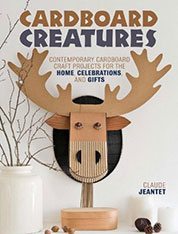 |
Cardboard Creatures: Contemporary Cardboard Craft Projects for the Home, Celebrations & Gifts written and created by Claude Jeantet What else can you do with cardboard? Sculptures, of course. There are clever animals to make here, designed by an architect who has her own shop in Paris where she sells her intriguing cardboard art. You and your children can make these things, too! Ages 5 and up (with adult supervision).. |
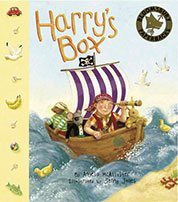 |
Harry’s Box written by Angela McAllister When Harry and his mom come back from the grocery store, he grabs the box the groceries came in and sets off for adventure with his dog, traveling the high seas, hiding from bears, and everything he can think of before he falls asleep to dream of more! Ages 3 to 7. |
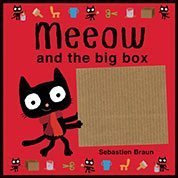 |
Meeow and the Big Box written and illustrated by Sebastien Braun For the preschool set, this book about a cat who creates a fire truck from a box is filled with bright colors and textures, and just enough text to read aloud. There are several more Meeow books. Ages 2 to 4. |
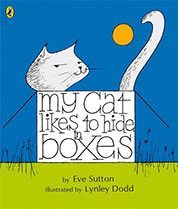 |
My Cat Likes to Hide in Boxes written by Eve Sutton A rhyming text for beginning readers which also makes a good read-aloud, this dynamic duo tells the story of an ordinary cat who likes to hide in boxes while cats around the world do astounding things. Ages 3 to 7 |
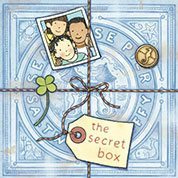 |
Secret Box written and illustrated by Barbara Lehman There are secret messages hidden in secret boxes to be discovered in secret places … a wordless book provides beautifully crafted images with intricate details that provide much to think and wonder about, ultimately encouraging the reader to create the story. There’s time travel, magic, and puzzles within this book. Good for ages 4 and up. |
 |
Tibet Through the Red Box written and illustrated by Peter Sís When the author was little, his father kept things inside a red box that his children were not allowed to touch. When the author is grown, he receives a letter from his father, telling him the red box is now his. The red, lacquered box holds secrets about his fathere’s experiences in the 1950s when he was drafted into the Czechoslovakian army and sent to China to teach filmmaking. At the time, Czechoslovokia is a secretive country behind the Iron Curtain. The father is soon lost in Tibet for two years, where his adventures must be kept secret but are shared with his son. The book’s illustrations are inspired by Tibetan art. Caldecott Honor Book, Boston Globe Horn Book Award. Ages 7 and up. |

